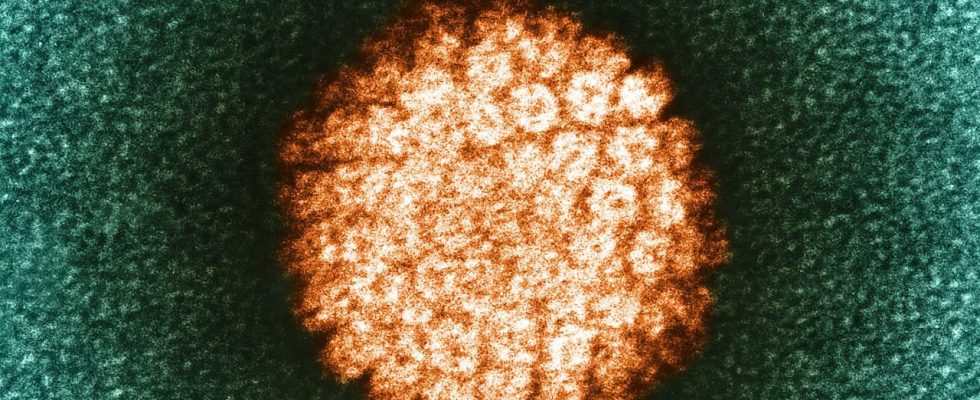Genital warts (lat. Condylomata acuminata), is a sexually transmitted infection, that is, a venereal disease. It is caused by certain types of the human papillomavirus (HPV).
Around 30 million people worldwide contract these genital or genital warts every year. They occur in the genital and anal areas and can cause various symptoms.
Here you can read everything you need to know about this common viral disease.
These are the symptoms of genital warts
Most often, one notices small, flesh-colored or gray growths in the genital or anal area. These growths often have a cauliflower-like structure and can appear singly or in groups.
Usually, these warts don’t hurt. But depending on where they are, they can cause itching, burning, or slight bleeding.
There are also genital warts that show no symptoms and therefore go unnoticed.
Factors that favor the appearance of warts are moisture, inflammation and skin injuries. Genital warts are more likely to develop when the immune system is weakened, as the virus can multiply more quickly in this case.
Danger! Genital warts are very infectious. That’s why they multiply quickly.
If you suspect genital warts, you should always consult a doctor to get a reliable diagnosis and treatment.
The diagnosis of genital warts
Genital warts can usually be recognized by their typical shape. The doctor will examine the affected area and surrounding areas closely.
If necessary and to be able to assess the extent of the HPV disease, a so-called painless “acetic acid test” can be carried out. For this, the affected skin areas are coated with 3 to 5 percent acetic acid. The condylomas then turn white. A biopsy can also help with the diagnosis.
Because genital warts can also form on mucous membranes, the diagnosis always includes an examination of the anal area and, if necessary, an examination of the urethra, the vagina and the anal canal.
Genital warts on the genitals are one of those taboo diseases that no one likes to talk about
Therapy of genital warts
Genital warts are treated not only to remove the visible warts, but also to bring and keep the virus under control. There are different possibilities for this.
- medication: Topical creams or solutions can be applied to the warts to gradually remove them. These often contain active ingredients such as salicylic acid lotions, silver nitrate or podophyllotoxin,
Tip: When using it, it is important to follow the doctor’s instructions exactly, as the active ingredients can also irritate the surrounding skin.
- surgical removal: Minor warts can be removed by cryotherapy (freezing), electrocautery (electrical burning), or laser therapy. Larger warts are surgically removed under local anesthesia.
- Immunotherapy: In some cases, immunotherapy (with interferon, imiquimod) may be useful to boost the body’s immune system so it can fight the virus.
What not to do with genital warts
It is better not to treat the genital warts yourself! Because the high risk of infection could make your symptoms significantly worse.
Regardless of the treatment method, monitoring is always important because there is no guarantee of a permanent cure from HPV papillomavirus infection.
The transmission of genital warts
Genital warts are mainly transmitted through direct skin contact, particularly during sexual activity.
Here are some ways people with genital warts can get it:
- sexual intercourse: The main mode of transmission of genital warts is sexual contact, including vaginal, anal, or oral intercourse that involves skin-to-skin contact between infected and uninfected genital areas.
- Skin-to-skin contact: Even without penetration, genital warts can be transmitted through direct skin contact between the affected genital areas.
- Touching infected material: Even when there is no sexual activity, genital warts can be spread through contact with infected areas of skin or objects such as towels, underwear, or sex toys.
- Rarer ways of transmission: In rare cases, genital warts can also be transmitted from mother to newborn during childbirth or through sharing damp towels or personal items.
This way you can avoid the risk of infection
Use condoms or other barrier methods during intercourse. An HPV vaccine is also available, which can protect against the most dangerous types of HPV.
Get regular checkups and screenings for STIs, especially if you’re sexually active.

